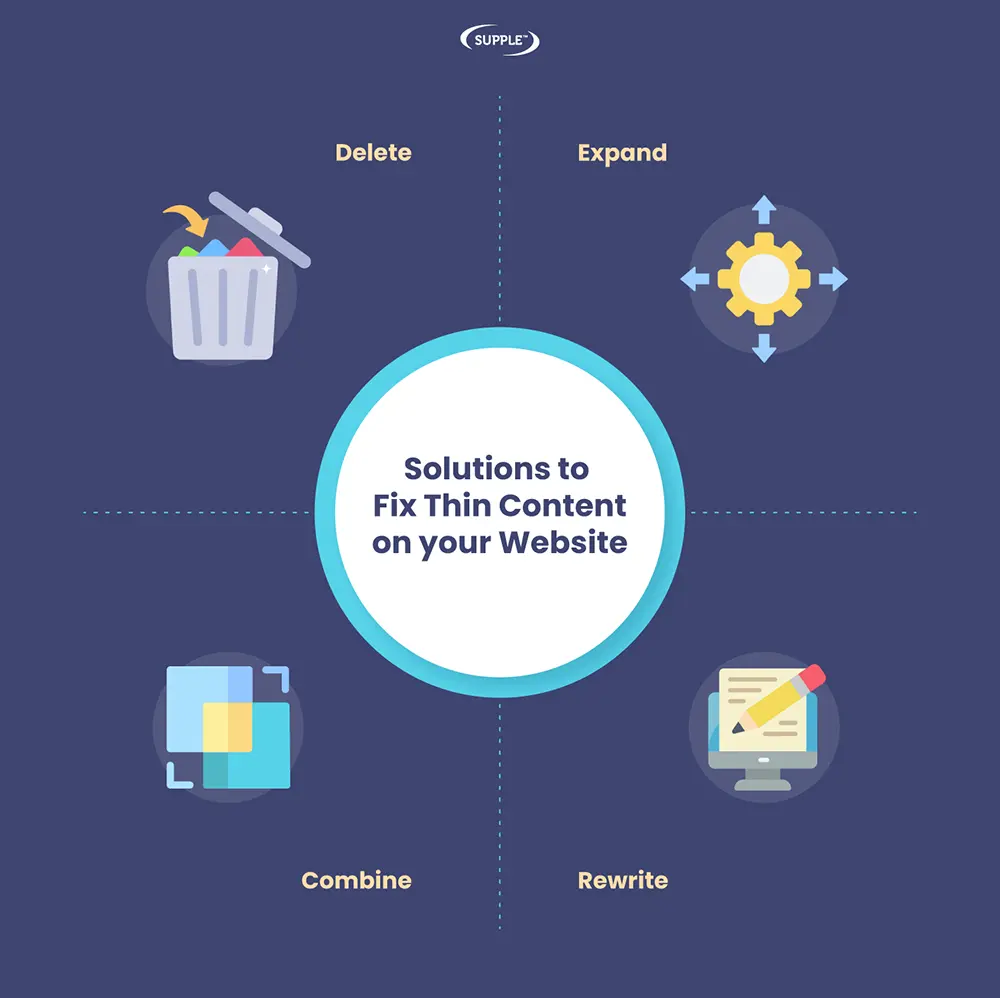What Is Thin Content?
Web pages that offer little to no value to the viewer are referred to as having thin content. It is often characterized by a lack of depth, creativity, and useful information. These types of pages contribute very little to the overall quality of a website and can negatively impact its performance. Addressing thin content is crucial for maintaining a high-quality site that meets the needs of its users. According to updates from Google’s algorithms, thin content pages often have poor rankings in search engine results, making it difficult for users to find them.
Thin content can be created unintentionally, often driven by the need for a high volume of content in a short amount of time. Websites focusing more on quantity than quality tend to fall into this trap. To gain and maintain a strong online presence, it is essential to prioritize creating content that offers substantial value to the audience.
Impact of Thin Content on SEO
Having thin content on your website can severely affect your Search Engine Optimization (SEO) efforts. According to the Search Engine Journal, thin content can lead to higher bounce rates and lower domain authority, ultimately impacting your site’s visibility. Industry studies have shown that websites rich in high-quality content perform significantly better in search rankings.
When search engines encounter thin content, they may deem the entire website to be of lower quality. This can result in lower rankings across all pages, not just those with thin content. Additionally, thin content can drive users away, as they are less likely to find the answers or value they seek, leading to increased bounce rates and reduced user engagement.
How to Identify Thin Content
Recognizing thin content can be challenging, but there are key indicators to watch for. These include low word count, lack of original information, and trivial topics. Employing tools such as Google Analytics and site audits can help pinpoint these low-value pages. Analyzing metrics like time on page, bounce rate, and user engagement can provide clearer insights into which pages may be considered thin content.
Users may not find the information valuable if, for instance, a page has a high bounce rate and a short average time on page. Conducting regular content audits can help identify these issues early on, allowing for timely revisions and updates to improve content quality.
Techniques to Improve Content Quality
Improving content quality involves several strategies. Start by conducting comprehensive research to ensure your content answers questions your audience might have. Integrate reliable data and statistics to back up your points. Adding data-driven insights can enhance the credibility and usefulness of your content.
Furthermore, consider including diverse content forms such as lists, how-tos, and infographics to keep readers engaged. For example, using bullet points and subheadings to divide a lengthy piece into smaller, more readable chunks might make it more interesting. This enhances readability and facilitates the more effective communication of complex information.
Using Multimedia to Enhance Content
Incorporating multimedia elements such as images, videos, and infographics can significantly boost the quality of your content. According to WordStream, visual content is more likely to be shared and remembered by readers. These components can more effectively explain difficult ideas and break up the text’s monotony.
For example, a video tutorial can complement a how-to article by providing a visual demonstration, making it easier for readers to understand the process. Similar to this, infographics can condense facts and research findings into a format that is both aesthetically pleasing and simple to comprehend. A variety of multimedia components can be used to accommodate various learning preferences and maintain audience interest.
Measuring Improvements in Content
After updating your content, use metrics to measure its effectiveness. Look at improvements in page traffic, time spent on a page, and engagement rates. Google Analytics and other SEO tools can provide insights into how well your improved content is performing. Future content plans can be guide by tracking these indicators over time to determine what still needs to be improve.
Furthermore, user reviews might be a great place to find information. Encourage readers to leave comments and suggestions to gauge their satisfaction with the content. This feedback can offer insights into what works well and what might need further refinement.
Tools and Resources
A number of technologies can help with content analysis and enhancement. These include Google Analytics, SEMrush, Ahrefs, and content audit tools. Online platforms like Moz and HubSpot offer ample resources and guides for better content creation and SEO practices. Implementing these tools can help streamline the process of identifying and enhancing thin content.
With the help of these tools, you may monitor several performance indicators and learn more about the preferences and behavior of users. They also provide recommendations for optimizing content, ensuring it aligns with SEO best practices. Consistently using these resources can significantly improve content quality and website performance.
Maintaining Content Quality Long-term
Content maintenance is an ongoing process. Regularly update your articles with new information, correct any outdated facts, and continuously strive to add value. Implementing a content calendar can help manage and schedule updates routinely to ensure your website remains competitive and valuable to users.
Furthermore, staying informed about industry trends and emerging topics can help keep your content relevant. Regularly conducting content audits and seeking user feedback can also help identify areas for improvement. You can ensure long-term success and sustained user engagement by actively maintaining and enhancing content quality.

